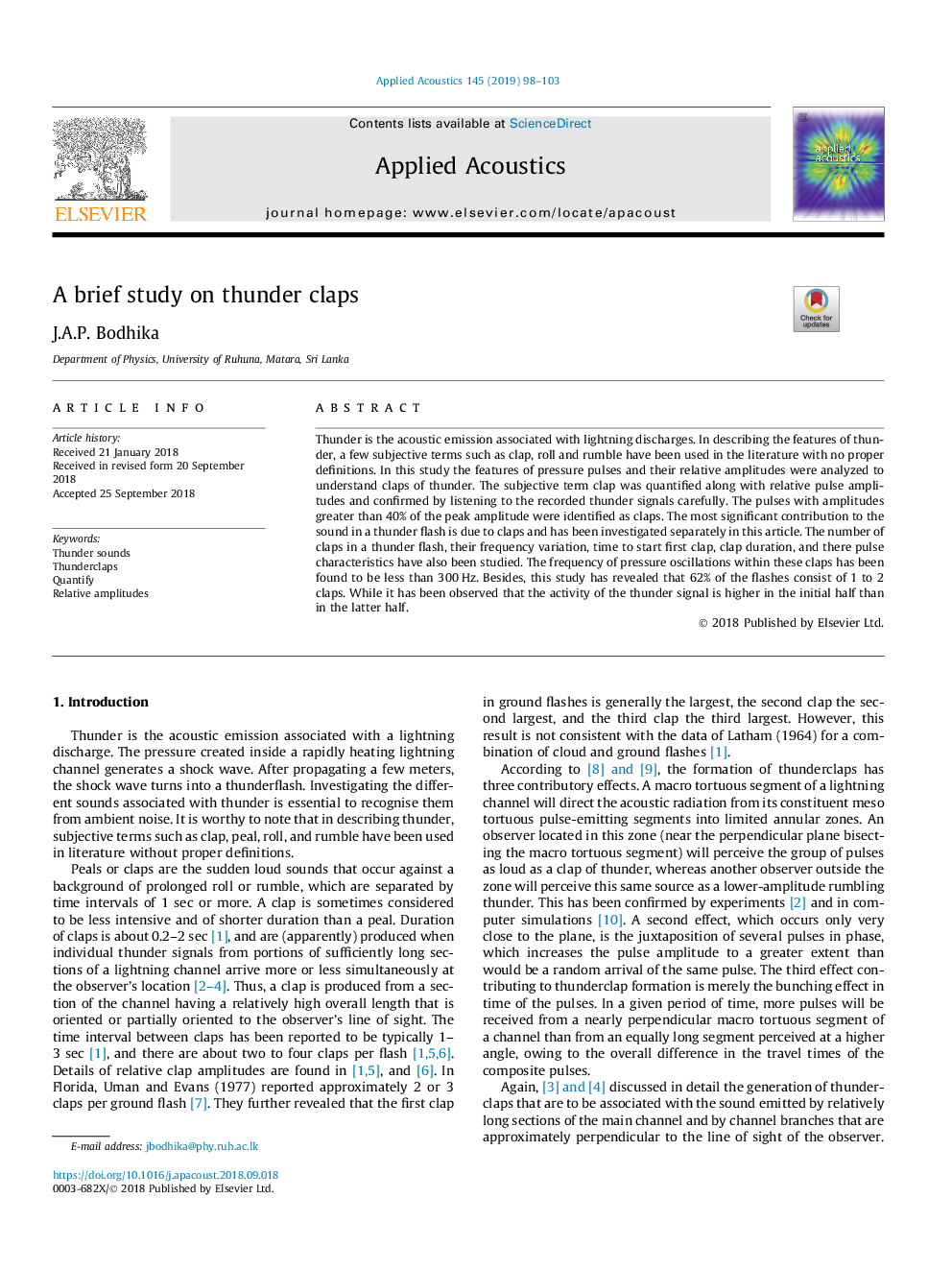| Article ID | Journal | Published Year | Pages | File Type |
|---|---|---|---|---|
| 11020759 | Applied Acoustics | 2019 | 6 Pages |
Abstract
Thunder is the acoustic emission associated with lightning discharges. In describing the features of thunder, a few subjective terms such as clap, roll and rumble have been used in the literature with no proper definitions. In this study the features of pressure pulses and their relative amplitudes were analyzed to understand claps of thunder. The subjective term clap was quantified along with relative pulse amplitudes and confirmed by listening to the recorded thunder signals carefully. The pulses with amplitudes greater than 40% of the peak amplitude were identified as claps. The most significant contribution to the sound in a thunder flash is due to claps and has been investigated separately in this article. The number of claps in a thunder flash, their frequency variation, time to start first clap, clap duration, and there pulse characteristics have also been studied. The frequency of pressure oscillations within these claps has been found to be less than 300â¯Hz. Besides, this study has revealed that 62% of the flashes consist of 1 to 2 claps. While it has been observed that the activity of the thunder signal is higher in the initial half than in the latter half.
Keywords
Related Topics
Physical Sciences and Engineering
Engineering
Mechanical Engineering
Authors
J.A.P. Bodhika,
